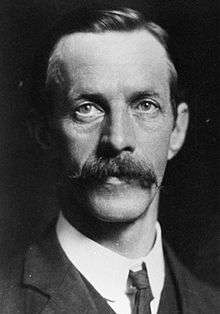1908 New Zealand general election
The 1908 New Zealand general election was held on Tuesday, 17 November, 24 November and 1 December in the general electorates, and on Wednesday, 2 December in the Māori electorates to elect a total of 80 MPs to the 17th session of the New Zealand Parliament. A total number of 537,003 (79.8%) voters turned out to vote.[1]
| |||||||||||||||||||||||||||||||||||||||||||||
All 80 seats in the New Zealand House of Representatives 41 seats were needed for a majority | |||||||||||||||||||||||||||||||||||||||||||||
|---|---|---|---|---|---|---|---|---|---|---|---|---|---|---|---|---|---|---|---|---|---|---|---|---|---|---|---|---|---|---|---|---|---|---|---|---|---|---|---|---|---|---|---|---|---|
| Turnout | 79.8% | ||||||||||||||||||||||||||||||||||||||||||||
| |||||||||||||||||||||||||||||||||||||||||||||
| |||||||||||||||||||||||||||||||||||||||||||||
Changes to the electoral law
The Second Ballot Act 1908 provided for second or runoff ballots between the top two candidates where the top candidate did not get an absolute majority. The second ballot was held seven days after the first ballot except in ten large rural seats, where fourteen days were allowed. In 1908, 22 second ballots were held on 24 November and one (Bay of Plenty) on 1 December. At the 1911 election, all 30 second ballots were held seven days later.[2] Two 1909 by-elections (in Rangitikei and Thames) also required second ballots.
The Second Ballot Act of 1908, which did not apply to the Maori electorates, was repealed in 1913.
Summary of results
Party totals
The following table gives party strengths and vote distribution.[3]
| Election results | ||||||
|---|---|---|---|---|---|---|
| Party | Candidates | Total votes | Percentage | Seats won | Change | |
| Liberal | 108 | 315,220 | 58.7 | 50 | -8 | |
| Conservative | 53 | 149,286 | 27.8 | 26 | +10 | |
| Ind. Labour League | 11 | 16,974 | 3.1 | 1 | +1 | |
| Socialist | 5 | 2,521 | 0.6 | 0 | ±0 | |
| Independent | 45 | 50,478 | 9.4 | 3 | -1 | |
Votes summary
Electorate results
The following are the results of the 1908 general election:
Key
Liberal Conservative Ind. Labour League Independent Liberal Liberal–Labour Independent
Table footnotes:
- † in Majority column depicts electorates in which a second ballot was held.
- Harry Ell was previously associated with the Liberal Party.
- For some biographical details of James Kerr refer to his father's article
- The affiliation of many of the Māori candidates is unknown or uncertain; note that the Second Ballot Act 1908 did not apply to Māori constituencies.
Summary of changes
- A boundary redistribution resulted in the abolition of seven seats:
- Caversham, held by Thomas Sidey
- Courtenay, held by Charles Lewis
- Hawera, held by Charles E. Major
- Mount Ida, held by John MacPherson
- Newtown, held by William Barber
- Waiapu, held by James Carroll
- Waikouaiti, held by Thomas Mackenzie
- At the same time, seven new seats came into being:
- Dunedin West
- Gisborne
- Stratford
- Taumarunui
- Tauranga
- Wellington South
- Wellington Suburbs
Notes
- "General elections 1853-2005 - dates & turnout". Elections New Zealand. Archived from the original on 14 November 2014. Retrieved 12 January 2011.
- McLintock, A. H. (1966). "Second Ballot System (1908–13)". An Encyclopaedia of New Zealand. Retrieved 1 August 2013.
- Wilson 1985, pp. 287–289.
- "The General Election, 1908". National Library. 1909. pp. 1–34. Retrieved 14 April 2012.
References
- Wilson, James Oakley (1985) [First published in 1913]. New Zealand Parliamentary Record, 1840–1984 (4th ed.). Wellington: V.R. Ward, Govt. Printer. OCLC 154283103.CS1 maint: ref=harv (link)


